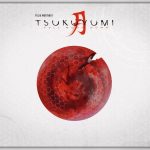 When whales migrate across the earth’s crust, mutated wild boars bunker down and dragons in the sky set the crusted surface of former seas on fire, then I wasn’t taking LSD, but Tsukuyumi: Full Moon Down was on the table. The Kickstarter-funded board game by Felix Mertikat has been a topic on my blog several times and I was hooked from the very first time I saw it. Has this enthusiasm also manifested itself in the final game or have the Oni not only lost their face, but also lost their fun?
When whales migrate across the earth’s crust, mutated wild boars bunker down and dragons in the sky set the crusted surface of former seas on fire, then I wasn’t taking LSD, but Tsukuyumi: Full Moon Down was on the table. The Kickstarter-funded board game by Felix Mertikat has been a topic on my blog several times and I was hooked from the very first time I saw it. Has this enthusiasm also manifested itself in the final game or have the Oni not only lost their face, but also lost their fun?
Quick check: What is Tsukuyumi about?
Tsukuyumi is all about control! The moon has crashed to earth, oceans have vaporized under the impact, the world has been turned inside out and the dreaded god Tsukuyumi has emerged from it all. His subservients, called Oni, are the scourge of the survivors. The playable races fight for supremacy in this harsh world. You think you get imaginative but typical area control skirmishes? Not at all!
First catchword: asymmetry. This is not only written in capital letters, it is lasered into the game’s DNA! Each faction simply plays completely differently. In addition, the evil Oni faction, which initially starts in the center of the moon, is played by all players at the same time, there are missions to complete, plenty of optional player expansions and a wonderfully fresh action system. In the end, the winner is the player who squeezes the most victory points out of all these areas. As you can guess, Tsukuyumi is anything but a lightweight! If you’re allergic to sourcebooks and rulebooks, have fun with the rash of your life. However, Tsukuyumi is never complicated, it’s just insanely comprehensive.
The exciting basic sequence
Tsukuyumi is played over four rounds in the normal game. Each round consists of four phases (white, blue, green and red), with each phase representing certain elements of the game. At the start of the game, each player has six action cards in their hand, on which the respective phases are depicted.
Now it gets exciting! Each card is unique, has a different focus and there are far more cards than are needed in the game. You can only use one card from your hand for the current round and pass on the rest for the next round. So, you know what the person sitting next to you might do in the next round.

There’s the downtime!
This may sound less spectacular on paper, but as there are no dice or other elements of luck, the decision is based purely on strategy and tactics. In which phase do I want to rock? Do I change my plan based on a card because the action is correspondingly strong, or do I remain flexible and choose a less risky middle ground? You should also take the person sitting next to you into account, or do you want to leave an extremely strong card to them? In short, the cards can mix things up a lot, even between phases! Some plans then must be thrown overboard. Now comes the word that nobody wants to read: downtime! As a selected card fixes the entire move with its four phases, everyone at the table really must think. This can easily become exhausting for those who are pondering.
The soul of the game

None are as strong as the mechs of Kampfgruppe 03, especially when they have been upgraded. The Archangel with a loaded Ragnarök missile pulverizes entire enemy armies. Only five figures in total and no faction bonuses, but that causes problems. Other factions have almost 40 units! On the other hand, Kampfgruppe 03 has the best combat cards. In contrast to the Dark Seed, who have hardly any battle strength and little power for conquest but are absolutely numerous! Killing them creates eggs from which new beasts hatch. They live everywhere, reproduce with ease and receive powerful temporary bonuses from the queen. Unlike the Boarlords, who bunker down and are real defensive specialists. And how fast are the humans, please? With their flexible firepower? In contrast, the Lords of the Lost See (whales) are slow, don’t fight much, but clean up the world and push the others out of their territories with ease. The Fireborn (dragons), on the other hand, destroy the home bases of other players and burn territories. Victory points are quickly lost!
The other factions are no less crazy and packed with special rules. The After the Moonfall expansion brings Tsukuyumi to a total of eight factions. This variety makes for long-term fun but requires you to think about your own faction and those of your fellow players. The exceptionally high asymmetry of the factions is not feigned by placebo mechanics but is of decisive quality in every fiber of the game. For everyone else, this creative variety will put a big grin on their face.

Familiarization time
However, Tsukuyumi does not only require familiarization with the factions! Numerous different types of territory, which, for example, bring more victory points or are more difficult to conquer, make the conquest interesting. The game structure is also completely modular. There are countless event cards that strongly influence the entire game. New territories are created, old ones turned or swapped. Barricades can also be built, or the properties of territories changed. If you position yourself badly, you can lose entire armies in the worst case.
There are also mission cards from the participating factions, each of which earns one victory point when completed. As these are displayed face up, the game objectives of all players change depending on the faction constellation. Sometimes it is more important to conquer many territories, sometimes you have to kill Onis. Variety is guaranteed right from the start of the game. Victory points are also awarded for having the initiative, but if you are at the back, the Oni faction takes over during a defense action. Are you still coming along? Not me.
Just a battle of materials?
All of this is further enhanced by the first expansion. This is far more than just quickly designed content for Kickstarter stretch goals. Mascots bring extra victory points at the end of the game, so play the bodyguard! There are epic special events, modular faction quests, Oni characters with special rules, event cards tailored to the factions‘ backstory and game start benefits. With the Kickstarter background, one might wonder if Tsukuyumi might be overloaded and lack the polish of a publisher. I think the best answer to this question is the fact that Asmodee will now bring Tsukuyumi to retail. Material battle? Yes, for sure. But quantity goes hand in hand with quality here.

Who is the bad guy here?
I mentioned at the beginning that each player controls the enemy Oni faction. This trick turns out to be great and I hardly know of anything comparable. Some action cards allow you to additionally activate the Oni faction. You can either raise new troops, move them or launch an attack. It’s obvious what kind of shenanigans you can get up to here. Drive hard chunks into the opposing army, block paths or conquer other players‘ territories. Oops, did you lose a victory point? You never know exactly what your opponents will do with the Oni and you have to watch out for them. If you are in the lead, you can be sure that other players with Oni actions will open the hunt together.
But that’s just the obvious fun. It can be an advantage to stand in the way of Oni armies yourself. The reason for this is the Oni missions of the factions. If you collect victory points by having to kill six Oni in a round, you’ll be happy to be in their neighborhood. Further optional Oni missions make the game even more exciting because it expands on this idea. For example, it rewards players who move into their own home territory with an Oni. Of course, this can end badly if other players interfere.
Ingenious battle
Similar to Cry Havoc, the battle mechanics in Tsukuyumi also excite me immensely. This is partly due to the asymmetry, but also to the decision as to whether I want to fight or conquer. If I have a combat action on my action card, especially in the red phase, I can play a card from my combat deck. These are divided into conquest and destruction cards. The former earns me victory points, the latter destroys enemy units. This division is also reflected in the units. Strong units do not necessarily have to conquer well. But only by conquering can you collect victory points in the end! Also, in contrast to many other area control board games, occupying an area with armies is not the same as conquering it. This requires some rethinking but makes for tactical fun! If you want to fight bluntly, Tsukuyumi is not for you.
But it gets even more interesting! To be honest, this is my favorite mechanic. Each combat card also shows the counter-actions for the defender. The choice of action is up to the defender. This is often damn tricky for the attacker and there is usually no satisfactory solution. So you have to think about which attack card is best for me and what will my opponent do with it? Suddenly you have to hit back hard, destroy your own units or allow your opponent to retreat smartly. The actions and reactions vary greatly depending on the faction – even within a deck. Just to impress you with a number, there are 43 different battle cards. Rarely have I enjoyed squabbling over territories in a board game so much, and without any random components.

Excellent ambience
 Is the article starting to stick? With so much enthusiastic praise? But I’m still not finished, because I hardly know of any other board game that places so much emphasis on atmosphere! There are wonderful comics for each base faction that give you an understanding of the background. Each card is explained in the codex, there are tactical tips and all kinds of information on various game elements. The scope and attention to detail is something I’ve only seen in tabletop sourcebooks. Tsukuyumi makes it easy to become completely immersed in the background and the identification with the races is much greater than in many other area control games. In the end, this also increases the fun of the game!
Is the article starting to stick? With so much enthusiastic praise? But I’m still not finished, because I hardly know of any other board game that places so much emphasis on atmosphere! There are wonderful comics for each base faction that give you an understanding of the background. Each card is explained in the codex, there are tactical tips and all kinds of information on various game elements. The scope and attention to detail is something I’ve only seen in tabletop sourcebooks. Tsukuyumi makes it easy to become completely immersed in the background and the identification with the races is much greater than in many other area control games. In the end, this also increases the fun of the game!
Conclusion
Beaten to death by the wall of text? To be honest, I could have written another three paragraphs. Tsukuyumi is simply bursting with great ideas! You are overwhelmed by material, but the gameplay is convincing. Even before you start the game, you are bathed in atmosphere, I have rarely enjoyed reading rulebooks so much – this is absolutely top class here. Then you immerse yourself in this tactically demanding game and the exceptionally high asymmetry tears the board game table from under your hands. You could be forgiven for thinking that the maxim during game development was that nothing in Tsukuyumi should be the same. What is impressive is that there is no sense of disadvantage. I don’t even want to know how many hours were spent on balancing. Since elements of luck are also banned, this is a proper piece of work! It can definitely overwhelm newcomers. However, you should allow yourself to familiarize yourself with the game due to the really many fresh ideas, such as the ingenious combat and action system. It is not surprising that the publisher Asmodee has included the title in its portfolio. As an area control game, Tsukuyumi is certainly one of the best of its kind!

Brettspieler | Carromspieler | Viel-Spieler | Ran NFL süchtig | Weinliebhaber | Leseratte | | Brettspielsammler | MTB Fahrer | Sportler | Hobby-Koch | Kooperativ-muss häufiger-sein | Terraformer | Musikgenuss | Spotifyer | Familie | Fußballer |
Im Fokus
Neueste Kommentare
- Gregor bei Vindication
- Marcel bei Vindication
- Sebastian bei Vindication
- Christian bei How to Save a World
- Tobias bei How to Save a World





















